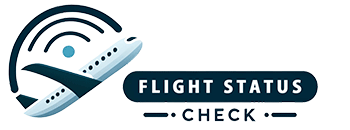In today’s world, air travel has become a common means of transportation for people all around the globe. With thousands of flights taking off and landing every day, keeping track of planes can be quite a daunting task. However, thanks to modern technology, plane tracking has become more accessible and convenient for the general public. In this article, we will explore the world of plane tracking and delve into the various methods and technologies used to keep an eye on the skies.
One of the most popular and widely used methods of plane tracking is through the use of online plane tracking websites and apps. These platforms provide real-time data on the location, altitude, speed, and flight path of virtually every commercial flight in the world. This information is made possible through the use of a technology known as Automatic Dependent Surveillance-Broadcast (ADS-B). ADS-B is a surveillance technology in which an aircraft determines its position via satellite navigation and periodically broadcasts it, enabling it to be tracked.
These plane tracking platforms are not only used by aviation enthusiasts and hobbyists but also by individuals who have loved ones travelling by air. With just a few clicks, concerned family members can monitor the progress of their loved one’s flight and ensure that everything is going smoothly. Additionally, plane tracking websites and apps are also extremely useful for tracking flights during times of severe weather or when there are potential delays or cancellations.
Another interesting aspect of plane tracking is the use of radar technology. Radar, which stands for Radio Detection and Ranging, is a system that uses electromagnetic waves to identify the range, altitude, direction, or speed of both moving and fixed objects. In the context of aviation, radar is used to monitor and track the movement of aircraft within a certain airspace. This technology has been in use for decades and continues to be an integral part of air traffic control systems around the world.
In addition to online platforms and radar technology, there are also dedicated plane tracking devices that can be used by enthusiasts and professionals alike. These devices, often small and portable, are equipped with ADS-B receivers and GPS technology, allowing users to track and monitor nearby aircraft in real-time. Some of these devices are also capable of receiving and decoding transmissions from aircraft that are equipped with Mode S transponders, providing even more detailed information about each flight.
One of the most fascinating aspects of plane tracking is the sheer amount of data that is available to the public. With the help of advanced technology, anyone with an internet connection can access a wealth of information about virtually any flight in the world. This includes details such as the aircraft type, airline, departure and arrival times, estimated arrival time, and even the current weather conditions at the destination airport. This level of transparency and accessibility is truly remarkable and has revolutionized the way people interact with air travel.
Furthermore, plane tracking has proven to be a valuable tool for aviation enthusiasts and professionals alike. For hobbyists, keeping track of flights and aircraft movements can be an exciting and educational pastime. It allows them to learn more about different aircraft models, airlines, and flight paths, as well as to gain a better understanding of how air traffic control and navigation systems work.
For aviation professionals, plane tracking is an essential part of their daily operations. Airline dispatchers, flight crews, and air traffic controllers all rely on accurate and up-to-date information to ensure the safe and efficient movement of aircraft. Plane tracking technologies have greatly improved situational awareness and communication within the aviation industry, leading to better decision-making and overall safety.
In recent years, plane tracking has also become an invaluable tool for journalists and aviation analysts. In the event of a plane crash or aviation incident, having access to detailed flight data can be crucial for understanding what went wrong and how similar events can be prevented in the future. This information also helps in the investigation and reconstruction of aviation accidents, providing valuable insights into the causes and contributing factors of such incidents.
Despite the numerous benefits of plane tracking, there are also some potential drawbacks and challenges associated with this technology. One of the main concerns is privacy, as some individuals may feel uncomfortable with the idea of their flight being tracked and monitored by the public. Additionally, there are security implications to consider, as the availability of detailed flight tracking information could potentially be exploited by malicious actors for nefarious purposes.
Another issue is the potential for inaccuracies in the data provided by plane tracking systems. While these technologies are designed to be highly reliable, there is always the possibility of errors or discrepancies in the information that is transmitted and received. This is particularly relevant when it comes to tracking aircraft in remote or sparsely populated areas, where the coverage and availability of tracking technology may be limited.
In conclusion, plane tracking has become an integral part of the aviation industry and a valuable resource for aviation enthusiasts and professionals alike. The use of advanced technologies such as ADS-B, radar, and GPS has made it possible for anyone to track and monitor flights in real-time, providing a wealth of information and insights into the world of air travel. While there are some potential challenges and concerns associated with plane tracking, its benefits and applications far outweigh the drawbacks. As technology continues to advance, we can expect plane tracking to become even more sophisticated and accessible, further enhancing our understanding and interaction with the world of aviation.

Leave a Reply